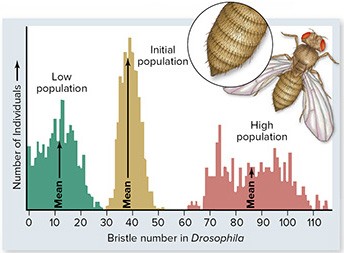What percent of undergraduate students who binged on alcohol also had other signs of alcoholism?
a. 10%
b. 50%
c. 25%
d. 75%
c
You might also like to view...
Any product of natural selection that increases the relative fitness of an organism in its environment is
called
a. mutation. b. adaptive trait. c. adaptation. d. speciation. e. variation.
Fossil evidence places the origin of angiosperms in the early Cretaceous period, at least 130 million years ago. By 100 million years ago, all of today's major lineages of angiosperms were in place. Angiosperms make up 95% of all modern plant species. Which of the following may help explain the rapid success of angiosperms?
a. Use of the wind to disperse pollen and seeds b. Flowers and fruits help protect and disperse both pollen and seeds c. Use of the wind to disperse spores d. Use of water to disperse pollen and seeds e. Animals eating the plants helped to disperse both pollen and seeds
In the summer of 2016, people sweltering in the midwestern United States didn't say, "It's not the heat, it's the humidity." Instead, they said "It's the cornsweat." Many blamed surrounding acres of cornfields for increasing the perceived temperature, already at record levels. Considering what you know about the water cycle, what information might address this idea?
A. Since most atmospheric water vapor over land comes from evaporation from lakes and rivers, corn has nothing to do with it. B. Since local temperatures are based on climate, and plants capture carbon dioxide, the fields of corn plants should actually decrease local temperatures. C. Most atmospheric water vapor in the Midwest has been blown there from water that evaporated from the ocean. Corn has nothing to do with it. D. Since 90% of the water in the atmosphere over land arrived there by evapotranspiration, it is reasonable to conclude that increased acreage of corn cultivation could increase local humidity.
The figure below shows results of bristle number in Drosophila flies after 35 generations of artificial selection. This figure suggests that
A. natural selection cannot lead to large phenotypic changes. B. after 35 generations of selection, populations no longer exhibit variation in bristle number. C. bristle number has evolved beyond the original range of phenotypic variation for this trait. D. at the end of the experiment, "high population" flies were unable to interbreed with "low population" flies.